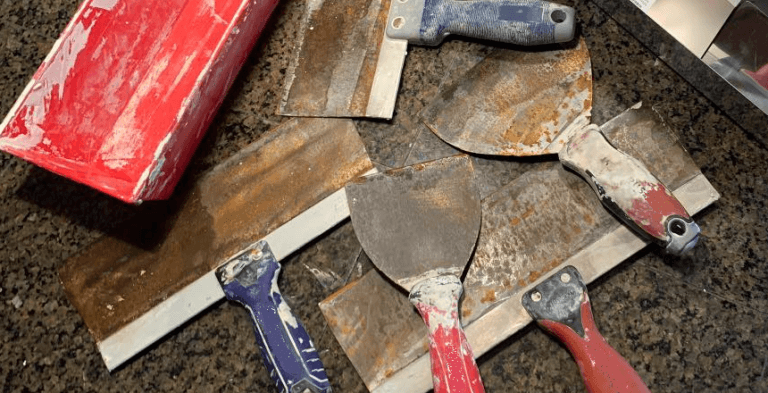Avoid These 5 Mistakes When Using Corner Finisher
When completing drywall projects, perfecting corner finishes can often be a daunting task, especially for less experienced contractors. I’ve seen it more times than I can count: a contractor, eager to deliver high-quality finishes, makes basic yet critical errors when using a corner finisher tool. Feeling frustrated and overwhelmed, they find themselves staring at uneven lines and poor joint adhesion. Wanting to avoid these pitfalls, I set out to demystify the process and share the five common mistakes you should avoid when using a corner finisher.
Understanding the Corner Finisher
Before delving into these pitfalls, it’s essential to understand what a corner finisher is. A corner finisher is a specialized tool designed for achieving smooth, clean finishes at inside corners of drywall installations. It’s a crucial tool for any drywall professional, helping ensure that your work is both efficient and aesthetically pleasing.
Lately, tools like those available at Level5 Tools have risen to prominence in the drywall industry. Their corner finishers and related tools are fab for novice and seasoned contractors alike, but even the best tools can be misused if certain mistakes aren’t avoided.
Mistake #1: Skipping Surface Preparation
One of the most compressive mistakes is rushing through surface preparations before the application of joint compound.
Why It Matters
Proper surface preparation ensures that the compound adheres well, reducing the likelihood of cracking or peeling later on.
How to Avoid This Mistake
- Clean the Surface: Make sure to remove any dust or debris. Wipe down the corners where the finisher will touch.
- Check for Imperfections: Inspect the joints for any gaps or irregularities that could affect the finish.
- Use a Quality Primer: Applying a primer can help create better adhesion for the joint compounds. This makes the corner finishes much smoother.
Remember, tools like joint knives from Level5 are great for smoothing out any rough spots before you start finishing.
Mistake #2: Incorrect Compound Consistency
Another mistake made frequently is using a compound that’s either too thick or too thin.
Why It Matters
The right consistency is crucial for a smooth finish. A compound that is too thick will drag, leaving a rough finish, while one that’s too thin won’t adhere properly.
How to Avoid This Mistake
- Check Thickness: Aim for a peanut butter-like consistency.
- Test Before Application: Use a trowel to scoop out some compound and let it fall back into the bucket. It should mostly keep its shape but easily spreadable.
Tools to Help
Using tools like compound tubes can help you manage consistency as they allow for easy application and smoothing of your joint compound.
Mistake #3: Improper Tool Technique
Many novice contractors might not be familiar with the specific technique needed to operate a corner finisher effectively.
Why It Matters
Proper technique ensures that your compound is evenly applied, leading to cleaner lines and fewer touch-ups.
How to Avoid This Mistake
- Understanding Angle: Hold the corner finisher at the right angle (approx. 45 degrees) to the corner for even coverage.
- Even Pressure: Ensure uniform pressure throughout the application process.
- Use Lights: Inadequate lighting may lead to misjudging thickness. Using portable work lights can highlight uneven texture while you work.
If you’re still struggling, consider practicing on scrap pieces of drywall. This will allow you to refine your technique without the pressure of perfection.
Mistake #4: Neglecting Drying Times
One major rookie error contractors make is not allowing adequate time for drying between coats, leading to poor adhesion and finish results.
Why It Matters
Drying times are crucial for achieving a smooth finish with multiple coats of compound. Not allowing each layer to set properly can create bumps and uneven surfaces.
How to Avoid This Mistake
- Read Labels: Most compounds have specified drying times. Make sure you adhere to these guidelines.
- Check the Environment: Factors such as humidity and temperature can impact drying times. If necessary, use fans to speed the process along, but avoid direct airflow onto the fresh compound.
For best results, keep checking the surface until it’s completely dry, and don’t rush into the next coat.
Mistake #5: Failing to Clean the Tool Properly
Many contractors overlook the importance of proper tool maintenance after use, which can drastically affect the quality of work in future applications.
Why It Matters
Residues left on your corner finisher can mix with new compound, leading to streaks and a subpar finish.
How to Avoid This Mistake
- Clean Immediately: After finishing, thoroughly clean your corner finisher, removing any dried compound.
- Use Quality Cleaning Tools: Having suitable cleaning brushes or scrapers can help dislodge stubborn compound remnants.
- Store Properly: Always store your tools in a dry place away from debris to maintain their integrity.
Conclusion: Perfecting Your Corner Finish
By steering clear of these five common mistakes when using a corner finisher, you’ll find that the quality and efficiency of your work will improve significantly. With tools from Level5 at your disposal, like the advanced corner rollers, and the correct technique under your belt, achieving a flawless finish is entirely within reach.
Call to Action
Are there any mistakes you’ve learned from in your drywall finishing experience? Share your stories in the comments! And don’t forget to check out our guide on How to Use a Corner Finisher for more tips on achieving perfect results.


